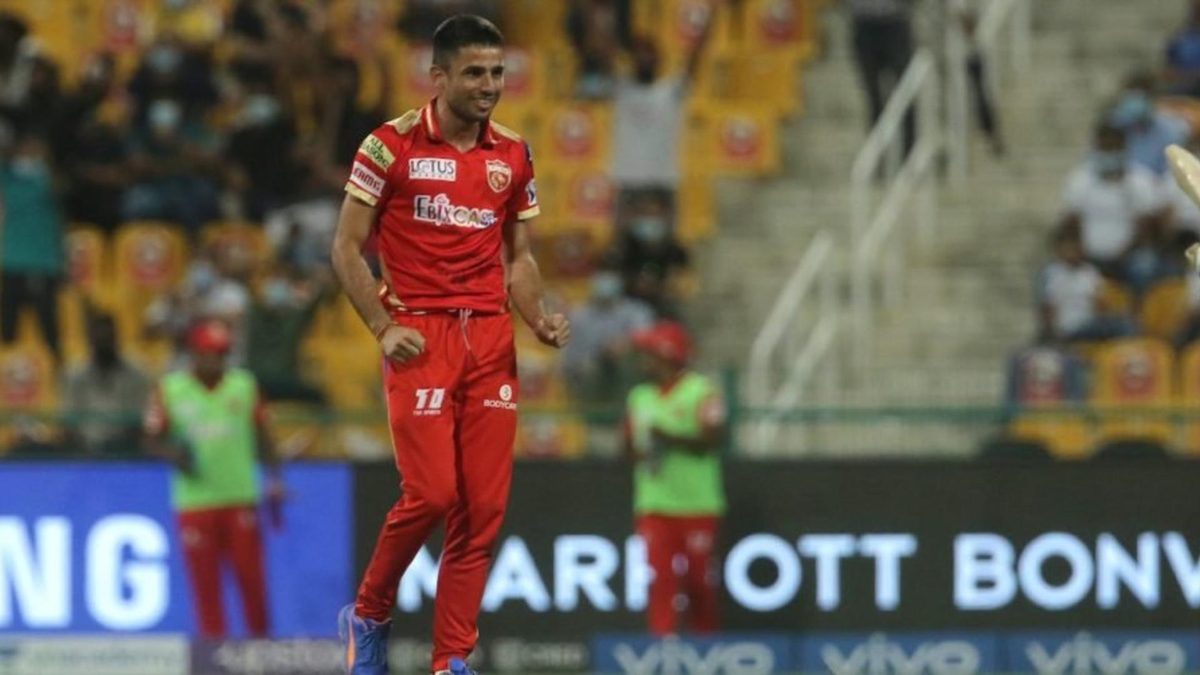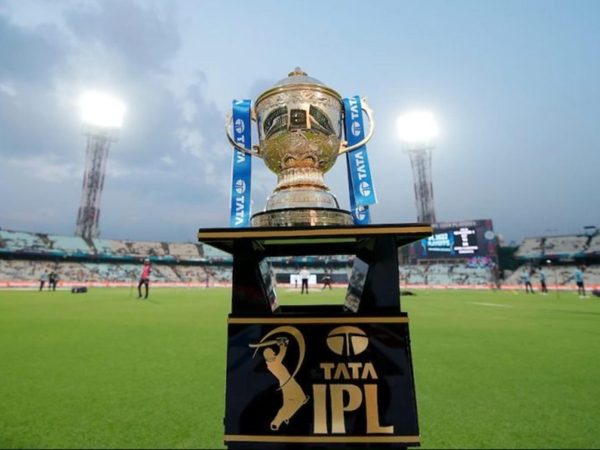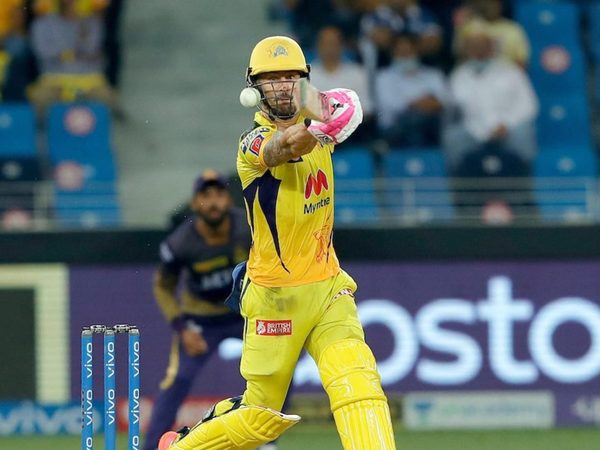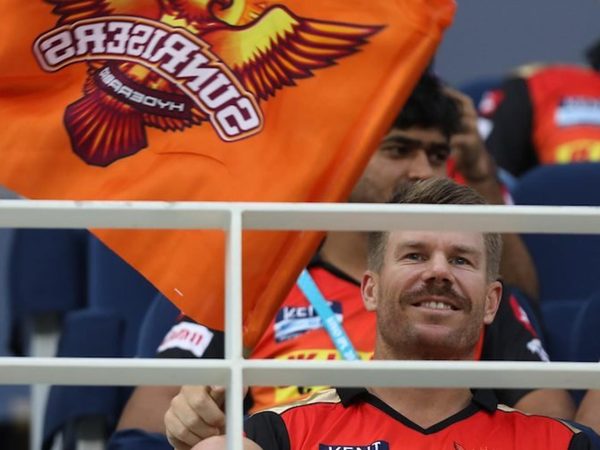
It’s not very India-like to fast-track a rookie leggie to a multi-nation event, but if it means India cut down on more ‘easy’ overs, then it’s never too late to do it, writes Rohit Sankar in favour of a late addition to India’s T20 World Cup squad.
One shot in the game between Royal Challengers Bangalore and Mumbai Indians is central to this discussion. Glenn Maxwell turned around and switch hit a Rahul Chahar leg break over deep point, the shorter boundary, for a six. No big deal. Maxwell did it quite a few times in his half-century that sunk Mumbai, and of course, it is Maxwell. You take it in your stride and go bowl the next one. Two balls later, Maxwell tries it again – unsuccessfully this time. Maxwell had sort of cracked the Chahar code there. Short boundary to his right, leg-spinner who rarely bowls a googly turning the ball away from him. Being a left-hander made it so much easier to counter the match up.
For a side as heavily reliant on data and match ups as Mumbai Indians are, Chahar is an interesting lead spinner. As highly talented and successful as Chahar has been, there’s an interesting thing to note about him: his numbers against left-handers. Only 11 of his 43 IPL wickets have come against southpaws. His average against them (37.0) is in stark contrast to his average against right-handers (22.0). Mumbai prefer holding him back against lefties as we saw in the game against Punjab Kings when they waited until the ninth over to bring him in as Chris Gayle and Nicholas Pooran were around until then.
It isn’t too different with Yuzvendra Chahal. Like Chahar, Chahal is reluctant to bowl his googly and has often been criticized for being too slow. The vogue in T20 spin bowling is to either be a mystery spinner or bowl skiddy fast wrist spin. The reason for this is that it reduces the ‘easy’ overs or the ones where batsmen know what is coming at them and only needs to decipher the length and line. Chahal fits into neither category. Chahar ticks one box and it was cited as a reason for choosing him ahead of Chahal by the chairman of selectors, Chetan Sharma.
“You want a spinner who can deliver with more speed,” Sharma said when announcing the squad. “Recently we have seen Rahul Chahar bowling with speed. The selectors’ view was we need a spinner who can find the grip off the surface on the wickets and deliver with slightly more speed, and while we had a lot of discussion on Chahal, we eventually went with Rahul Chahar.”
Let’s be clear. There’s very little to fault about India’s T20 World Cup squad really. And that’s quite rare for squads India choose. If you wish to nitpick, there’s the absence of Chahal. But the squad still has an off-spinner with experience, a promising leg-spinner, a mystery spinner who still remains unravelled, a left-arm orthodox spinner who bowls in the powerplay and a left-arm orthodox spinner and all-rounder who bats No.7, smashes pace and bowls in the middle overs. That’s about every box ticked in bold and highlighted with a green border.
But when it comes to tackling left-handed heavy teams, India are reliant on R Ashwin, not a certain starter, and Varun Chakravarthy, who is an unconventional spinner with an excellent record against both hand types. India have every likelihood of facing either England or West Indies — both teams boasting hard-hitting batters who like to line up for a big heave against slow bowlers — in the semi-finals, assuming they make it past their group, which indeed they should.
The advantage of having a mystery spinner in the squad is that batters can’t line up against them and it gives the team four overs where batsmen have some element of uncertainty when looking to go big. But what if you have two of them? Playing out eight overs is impossible in this format even on the slowest decks, and batters will invariably have to take one of them on.
Ravi Bishnoi, who was unfairly benched at the start of the UAE leg by Punjab Kings, and has since stormed the scene, is an unconventional wrist spinner whose stock ball is his googly. Against Mumbai the other night, Punjab, finally realizing the gem they had in their hands, brought Bishnoi on against Mumbai’s openers in the powerplay.
The planning was sound. Bishnoi was their x-factor and Mumbai were overly reliant on Rohit Sharma and Quinton de Kock for runs this season. Bishnoi nearly wrecked the chase when he had Rohit Sharma and Suryakumar Yadav dismissed off successive balls. He nearly had Quinton de Kock in the eighth over when Aiden Markram shelled a tough chance. Mumbai escaped the Bishnoi trap thanks to Saurabh Tiwary holding on against him and leaving Hardik Pandya and Kieron Pollard to take on the pacers in the death.
The game not only makes a strong case for Bishnoi, but also reiterated what having two spinners that are difficult to read could do. Tiwary’s innings left Punjab with no ammunition to attack Hardik and Pollard. Bishnoi is as unconventional as Varun, if not more. He is excellent against left-handers (an average of 17 and strike rate of 14.6 in the IPL so far) and right-handers and can bowl in any phase of the innings. Crucially, he has had less game time than Varun and as such remains a bigger mystery, owing to a lower sample size of data, than the KKR spinner.
While Chahar is a promising talent, he is less of a step up from Chahal and more in his mold, if anything. In fact, Chahal himself seems to be recognizing the need to be woke in this age of quick-entry-quicker-disappearance spinners. In the second leg of the IPL so far, the RCB spinner has been bowling quicker and relying more on his googly, unlike Chahar.
With Ashwin and Jadeja as fail-safe options in the spin department, when moving away from a spinner they had backed for 49 T20Is in the T20 World Cup cycle on the eve of the event itself, India had — and still have — the option of going completely rogue. As risky as it is, it could well be the edge they need to bring home the trophy. As someone once said, it’s never too late to bring the right player in.








